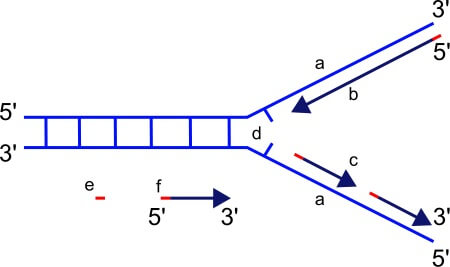Replication Assignment Help
Points to be noted:
- Replication is a semi-conservative method where one strand acts as the template for the synthesis of complementary strand of DNA.
- DNA synthesis begins from 5� to 3� direction.
- DNA polymerase initiates the synthesis of new strand and this enzyme requires a template and a primer.
- One strand of DNA is synthesized continuously and is called leading strand and the other strand is synthesized in pieces called lagging strand.
- Other enzymes involved in replication process are DNA Primase, DNA Ligase, Topoisomerase and DNA Helicase.
For replication assignment help students can contact assignmenthelp.net. Your query on any topic of replication is correctly answered by the tutors of this company in minimum time.
Introduction
Replication also means the process of creating a duplicate copy. Replication of DNA though sounds a simple task but the mechanism is actually complex that requires different enzymes. Therefore accurate mechanisms are required in order to replicate the DNA and for this different enzymes and proteins are involved. Though the basic mechanisms of replication are same in all the organisms but humans and other eukaryotes have a little complex process.
Process of DNA replication in E.coli
The mechanism of DNA replication begins with unzipping of double helix of DNA. The process of unwinding is carried on by an enzyme called Helicase. This enzyme breaks hydrogen bond that holds the complementary bases together which are A with T and C with G. Thus this separation creates a Y shape structure called as replication fork. The two separated strands act as template for synthesis of new strands.
One strand among the two is positioned in 3� to 5� direction and is called as leading strand whereas the other strand is in opposite direction i.e. 5� to 3� and is called lagging strand. Thus the synthesis of complementary strand begins in the opposite directions. In case of leading strand, RNA primer is produced by primase that binds to the end of this strand and thus act as opening point for the synthesis of DNA. This replication is called continuous replication of DNA. In case of lagging strand, not a single primer but many RNA primers are required to complete the synthesis of new strand. So this type of replication is termed as discontinuous replication and the primers are called Okazaki fragments. These primers are added to different points of the lagging strand and hence the synthesis continuous. In both the cases elongation of new strand with the help of RNA primer is done by DNA polymerase. Once the complementary strand is synthesized, another enzyme termed as exonuclease cuts away the primer and the gaps are sealed by Ligase. In this mechanism, other enzymes also play very important roles.

{`
a-template strand
b-leading strand
c-lagging strand
d-replication fork
e-primer
f-Okazaki fragments
`}
Topoisomerase: It prevents the tight winding of DNA double helix forward of the replication fork. It also creates temporary nick in the helix in order to release tension. Beside these, it also seals the nick so that any permanent damage can be avoided.
Sliding camp: It is a ring shaped protein that helps by holding DNA polymerase III in correct place so that nucleotide in the new strand can be added accurately.
DNA polymerase I: It helps in adding the DNA nucleotide when the RNA primer is removed.
This is only a short description of replication in E.coli but the process is little complex in Eukaryotes. So, to study this topic in deeper way = expert guidance experts guidance is required. Therefore, assignmenthelp.net provides you subject experts who can provide answer to your doubts and answer them in simpler and understandable form. The notes and explanation are prepared by professionals after accumulating information from different books and then composing it in one piece. The process requires days and weeks but since this company is linked to more than one tutors of the same field, so a team work allows students to get answer in short duration of time. Once the answer is generated, it is rechecked and reevaluated with proper source in order to avoid any kind of plagiarism. The timing is flexible, so students can contact any time of the day for replication assignment help. Image source: https://commons.wikimedia.org/wiki/File:Replication_fork.svg
For more information, kindly contact the members of this company through phone call or email.
The main topics which are considered in molecular biology are discussed in brief as follows:
- Molecular Biology
- Mendel's Discoveries
- Nucleic Acids Convey Genetic Information
- The Structure Of DNA And RNA
- The Replication Of DNA
- Transcription
- Translation
- Gene Regulation
- DNA Damage and repair
Email Based Homework Help in Molecular Biology
To submit Molecular Biology assignment click here



